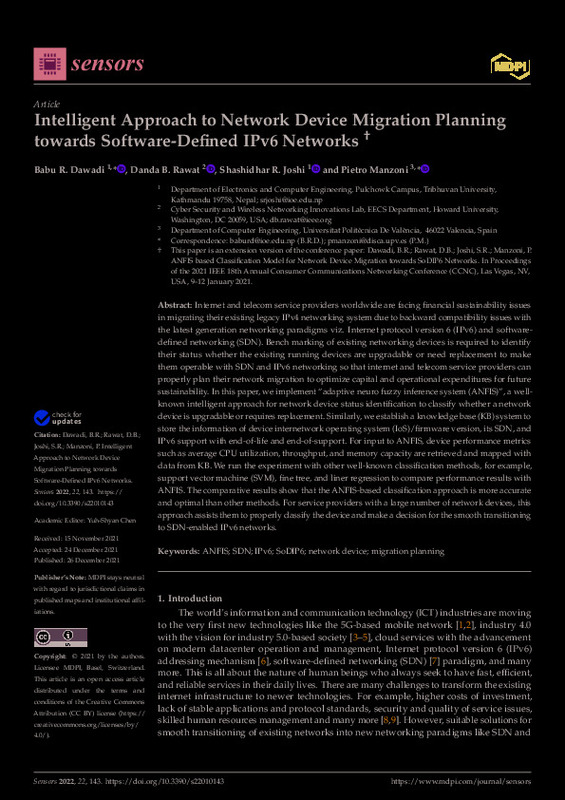JavaScript is disabled for your browser. Some features of this site may not work without it.
Buscar en RiuNet
Listar
Mi cuenta
Estadísticas
Ayuda RiuNet
Admin. UPV
Intelligent Approach to Network Device Migration Planning towards Software-Defined IPv6 Networks
Mostrar el registro completo del ítem
Dawadi, BR.; Rawat, DB.; Joshi, SR.; Manzoni, P. (2022). Intelligent Approach to Network Device Migration Planning towards Software-Defined IPv6 Networks. Sensors. 22(1):1-21. https://doi.org/10.3390/s22010143
Por favor, use este identificador para citar o enlazar este ítem: http://hdl.handle.net/10251/193167
Ficheros en el ítem
Metadatos del ítem
| Título: | Intelligent Approach to Network Device Migration Planning towards Software-Defined IPv6 Networks | |
| Autor: | Dawadi, Babu R. Rawat, Danda B. Joshi, Shashidhar R. | |
| Entidad UPV: |
|
|
| Fecha difusión: |
|
|
| Resumen: |
[EN] Internet and telecom service providers worldwide are facing financial sustainability issues in migrating their existing legacy IPv4 networking system due to backward compatibility issues with the latest generation ...[+]
|
|
| Palabras clave: |
|
|
| Derechos de uso: | Reconocimiento (by) | |
| Fuente: |
|
|
| DOI: |
|
|
| Editorial: |
|
|
| Versión del editor: | https://doi.org/10.3390/s22010143 | |
| Código del Proyecto: |
|
|
| Agradecimientos: |
FundingThis research was partially funded by the Norwegian University of Science and Technology, Trondhiem, Norway (NTNU) under Sustainable Engineering Education Project (SEEP) financed by EnPE, University Grant Commission ...[+]
|
|
| Tipo: |
|









